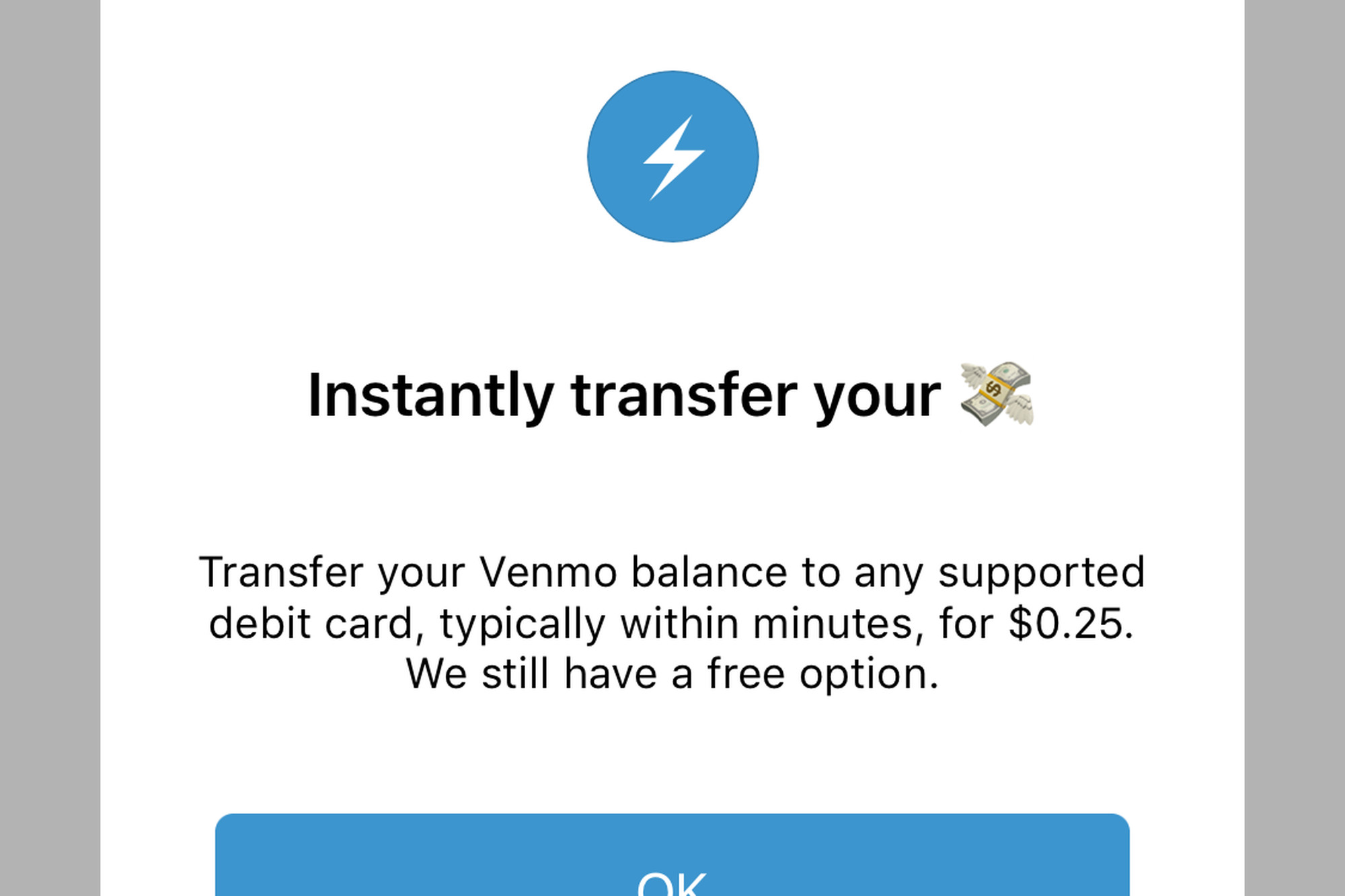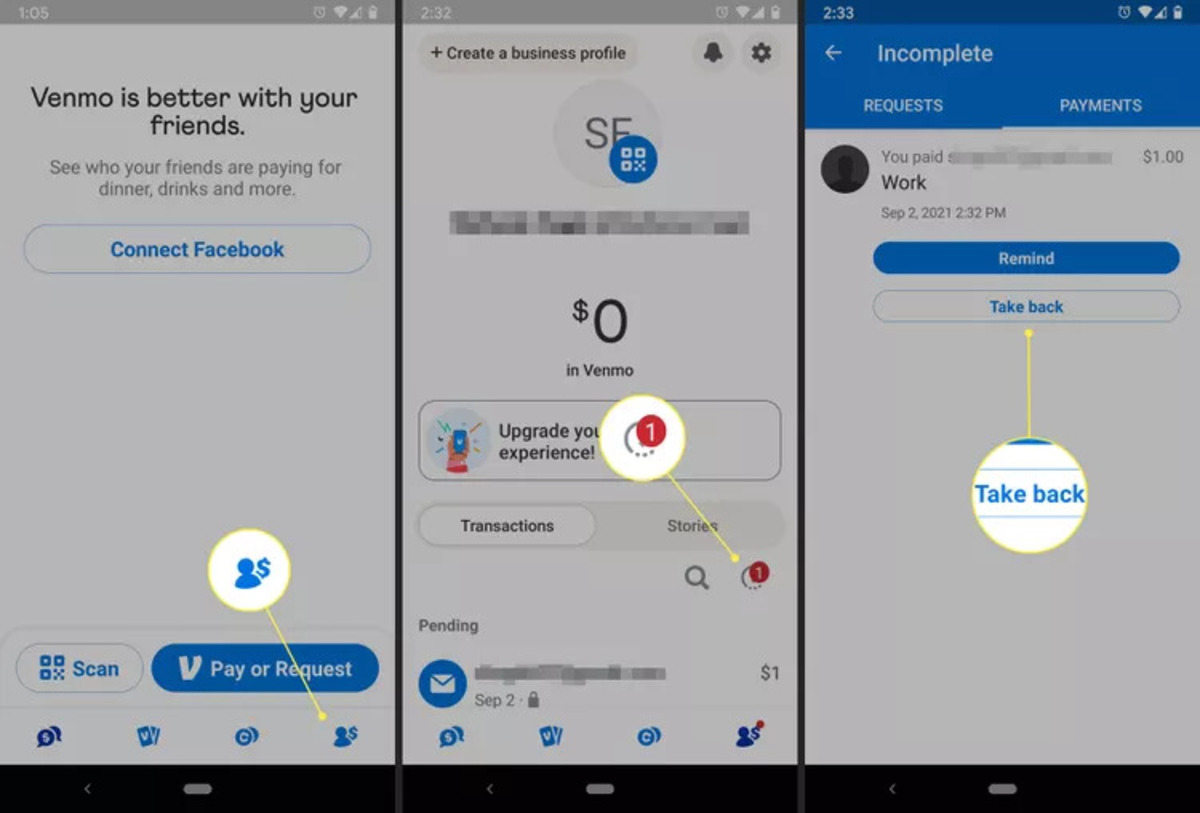Introduction
Welcome to our guide on how long it takes for Venmo transfers! Venmo has become a popular way to send and receive money digitally, and understanding the timing of these transactions can be crucial. Whether you’re a regular Venmo user or considering using it for the first time, knowing how long it takes for transfers can help you plan your finances effectively.
Over the past few years, Venmo has revolutionized the way people handle peer-to-peer transactions. With its seamless and user-friendly interface, it has quickly become a go-to app for splitting bills, paying friends back, or making quick purchases. Gone are the days of fumbling for cash or dealing with delayed checks in the mail.
But with the convenience of Venmo comes the question of how long it takes for transfers to actually go through. In this guide, we will delve into the various factors that can impact the speed of Venmo transfers, explore different types of transfers, and provide valuable tips to expedite the process.
Whether you need to send funds urgently or are simply curious about the inner workings of Venmo’s transaction timeline, this guide will equip you with the knowledge you need to navigate the world of Venmo transfer times. Let’s dive in!
What is Venmo?
Venmo is a popular mobile payment service that allows users to send and receive money from friends, family, or businesses easily and conveniently. It was founded in 2009 and acquired by PayPal in 2013, rapidly gaining popularity and becoming a household name in digital transactions.
One of the primary reasons for Venmo’s widespread success is its simplicity and social aspect. Users can connect their Venmo accounts to their bank accounts or credit cards and seamlessly transfer funds to other Venmo users. Additionally, the app’s social feed allows users to see their friends’ transactions and leave comments or emojis, adding a fun and interactive element to the payment process.
It’s important to note that Venmo is primarily designed for person-to-person transactions, rather than for making purchases at businesses. While some merchants do accept Venmo as a form of payment, its main focus is on facilitating transactions among individuals and small groups.
Furthermore, Venmo offers a secure platform for financial transactions. It utilizes encryption and uses various security measures to protect users’ sensitive information. However, like with any digital transaction service, it is always essential to exercise caution and ensure that you are sending or receiving money from trusted individuals.
With its user-friendly interface and social features, Venmo has become a popular choice for splitting bills, reimbursing friends, or sending money for shared expenses, such as rent or group vacations. It has also become a convenient way to make charitable donations or support small businesses.
Now that we have a better understanding of what Venmo is and its primary functions, let’s explore how the Venmo payment process works and the factors that can affect the time it takes for transfers to complete.
How does Venmo work?
Venmo simplifies the process of transferring money between individuals or groups by leveraging the power of digital technology. Here’s a step-by-step breakdown of how Venmo works:
- Create an account: Start by downloading the Venmo app from the App Store or Google Play. Once installed, sign up for a Venmo account using your email address or by linking your Facebook account.
- Add a funding source: To send or receive money with Venmo, you’ll need to link a bank account, debit card, or credit card to your Venmo account. This serves as the source of funds for your transactions.
- Find friends: Connect with your friends on Venmo by searching for their usernames or syncing your contacts. Once connected, you’ll be able to see their transactions and easily send or request money from them.
- Make a payment: To send money, tap on the “Pay or Request” button in the app. Enter the username, email, or phone number of the recipient and the amount you wish to send. You can also add a note to specify the purpose of the payment.
- Confirm the transaction: Before completing the payment, review the details to ensure accuracy. If everything looks good, tap the “Pay” button to initiate the transfer. Venmo will deduct the funds from your linked bank account, debit card, or credit card.
- Receive money: When someone sends you money on Venmo, you’ll receive a notification. Open the Venmo app to see the payment in your Venmo balance. From there, you can either keep the funds in your Venmo account or transfer them to your linked bank account.
- Security: Venmo takes security seriously and employs measures to protect your information. They use encryption to secure your data and offer security features like PIN protection and two-factor authentication for added safety.
It’s worth noting that Venmo transactions are typically free between friends when using a linked bank account or debit card. However, there may be fees associated with using a credit card or certain merchant transactions.
Now that you understand the basics of how Venmo works, let’s explore the time it takes for Venmo transfers to process and the factors that can impact these transfer times.
How long does it take for Venmo transfers?
When it comes to Venmo transfers, the timing can vary depending on several factors. Generally, Venmo offers two types of transfers: instant transfers and standard transfers. Let’s take a closer look at each type:
1. Instant transfers: As the name suggests, instant transfers allow you to move money from your Venmo account to your linked bank account within minutes. However, there is a small fee associated with instant transfers. This option is especially useful when you need to access your funds quickly or make an urgent payment.
2. Standard transfers: Standard transfers are free and typically take one to three business days to complete. When you initiate a standard transfer, Venmo sends the funds to your linked bank account, and the processing time depends on various factors, such as weekends, holidays, and the individual bank’s policies.
It’s important to note that the timing of Venmo transfers can also be influenced by external factors that are beyond Venmo’s control. For instance, delays can occur if there are issues with your linked bank account or if you have insufficient funds. Additionally, network outages or technical glitches can impact transfer times.
Overall, while Venmo strives to provide fast and efficient transfers, it’s crucial to consider these factors when estimating the time it takes for your funds to be available in your bank account.
Now that we have a general idea of the different types of Venmo transfers and their associated time frames, let’s delve deeper into the factors that can affect Venmo transfer times.
Factors that affect Venmo transfer time
Several factors can influence the processing time of Venmo transfers. While Venmo strives to provide quick and reliable transfers, it’s essential to be aware of these factors that can impact the overall transfer time:
- Bank processing time: Venmo transfers rely on the banking system to process transactions. The time it takes for the funds to move from your Venmo account to your linked bank account can depend on the policies and processing times of your bank. Some banks may process transfers faster than others, so it’s worth checking with your bank to understand their specific timelines.
- Transfer method: The type of transfer you choose can also affect the timing. Instant transfers typically occur within minutes, while standard transfers can take one to three business days. If time is of the essence, opting for instant transfers, although they incur a small fee, can expedite the availability of funds in your bank account.
- Verification and security checks: In some cases, Venmo may need to verify certain aspects of your account or payment to ensure the security of your funds. This verification process can add additional time to the transfer. It’s essential to provide accurate information and promptly respond to any verification requests to prevent delays.
- Weekends and holidays: Weekends and holidays can impact the timing of Venmo transfers. Banks typically do not process transactions over weekends and holidays, which can result in longer transfer times. If you initiate a transfer on a Friday or before a holiday, it may take longer to reach your bank account.
- Insufficient funds or bank issues: If you don’t have sufficient funds in your Venmo account or if there are any issues with your linked bank account, such as an expired card or invalid account details, the transfer may be delayed. It’s crucial to ensure that your Venmo account is adequately funded and that your linked bank account information is up to date.
By considering these factors, you can have a better understanding of the potential delays that may occur in the Venmo transfer process. To expedite the transfer time, Venmo provides the option for instant transfers, and there are also tips and tricks you can utilize, which we will discuss in the upcoming sections.
Instant transfers
Venmo offers an option for instant transfers, which allows you to move funds from your Venmo account to your linked bank account within minutes. While standard transfers typically take one to three business days, instant transfers provide a convenient way to access your money immediately, albeit for a small fee.
Instant transfers can be beneficial in situations where you need quick access to your funds. Whether you have an urgent payment to make or simply need the peace of mind of having immediate access to your money, instant transfers can be a valuable feature.
It’s important to note that there is a flat fee associated with instant transfers. This fee varies depending on the amount of the transfer and is displayed clearly during the transfer process. While the fee may deter some users, the convenience and speed of instant transfers can outweigh the cost for many individuals.
To initiate an instant transfer, follow these steps:
- Open the Venmo app on your mobile device and navigate to the “Transfer to Bank” section.
- Select the amount you want to transfer and choose the “Instant” option.
- Review the fee associated with the instant transfer, which will be displayed before you confirm the transaction.
- If you agree to the fee, confirm the transfer and wait for the funds to be deposited into your linked bank account.
It’s worth noting that instant transfers are subject to certain limits. The maximum amount you can transfer instantly from your Venmo balance to your bank account is $10,000 per transfer. Additionally, there may be daily and weekly limits imposed by Venmo for instant transfers, so it’s essential to be aware of these limits when planning your transfers.
Overall, instant transfers provide a convenient way to access your funds quickly, but it’s important to consider the associated fees when deciding between instant and standard transfers.
In the next section, we will explore tips to expedite Venmo transfers and ensure a seamless experience.
Standard transfers
Standard transfers are the default option for transferring funds from your Venmo account to your linked bank account. These transfers are free of charge, but they typically take one to three business days to complete. While not as immediate as instant transfers, standard transfers are a reliable and cost-effective way to move funds.
The duration of a standard transfer can vary depending on several factors, including weekends, holidays, and the policies of your bank. It’s important to note that weekends and holidays can prolong the transfer time since banks typically do not process transactions on these days.
When initiating a standard transfer, Venmo will send the funds from your Venmo account to your linked bank account. The actual processing time will depend on how quickly your bank is able to receive and process the funds. Some banks may take longer than others, so it’s recommended to check with your bank to understand their specific policies and processing times.
To initiate a standard transfer, follow these steps:
- Open the Venmo app on your mobile device and navigate to the “Transfer to Bank” section.
- Select the amount you want to transfer and choose the “Standard” option.
- Confirm the transfer and wait for the funds to be deposited into your linked bank account.
It’s important to ensure that your Venmo account has sufficient funds for the transfer to be successful. If there are insufficient funds or any other issues with your linked bank account, the transfer may be delayed or unsuccessful.
While standard transfers may not provide immediate access to your funds, they are still a convenient and reliable way to move money between your Venmo account and your bank account. It’s advisable to plan transfers in advance, especially when time is a factor, to account for the processing time.
Now that we have explored both instant and standard transfers, let’s delve into some tips to expedite Venmo transfers and ensure a smooth transaction experience.
Tips to expedite Venmo transfers
While the timing of Venmo transfers can be influenced by various factors, there are several tips you can follow to help expedite the process. By implementing these tips, you can ensure faster and more efficient transfers:
- Keep your Venmo account funded: To avoid any delays or issues during the transfer process, make sure your Venmo account has sufficient funds to cover the amount you wish to transfer. This will help ensure a smooth and successful transaction.
- Verify your bank account: Verifying your bank account with Venmo can help streamline the transfer process. By providing accurate and up-to-date bank account information, you can avoid any potential delays or complications.
- Check your bank’s processing times: Different banks have varying processing times for transfers. It’s beneficial to be aware of your bank’s specific policies and processing timelines to better estimate how long it will take for the funds to be available in your bank account.
- Avoid initiating transfers on weekends and holidays: Banks typically do not process transactions on weekends and holidays, which can result in longer transfer times. If time is a factor, it’s best to initiate the transfer on a business day to minimize any potential delays.
- Consider using instant transfers for urgent needs: If you need immediate access to your funds, opting for instant transfers can be a suitable option. While they do come with a small fee, instant transfers provide a quicker way to move money from your Venmo account to your bank account.
- Verify recipient information: When sending money to someone, double-check that their Venmo account information, such as their username or email address, is correct. This will help ensure that the funds are sent to the intended recipient and avoid any delays or complications.
- Stay connected and responsive: In some cases, Venmo might require you to verify certain aspects of your account or transaction. It’s important to promptly respond to any verification requests and provide accurate information to prevent unnecessary delays.
By following these tips, you can increase the efficiency of your Venmo transfers and minimize any potential delays or complications that may arise during the process.
In the next section, we will address common issues that users may encounter with Venmo transfers and provide suggestions on how to resolve them.
Common issues with Venmo transfers and how to resolve them
While Venmo strives to provide a seamless and efficient transfer experience, there are some common issues that users may encounter. Here are a few common problems and suggestions on how to resolve them:
- Insufficient funds: If you attempt to make a transfer from your Venmo account without sufficient funds, the transfer may be declined or delayed. To resolve this, ensure that your Venmo account is adequately funded before initiating the transfer.
- Invalid bank account details: If you receive an error message stating that your bank account details are invalid, double-check that you have entered the correct information. Make sure the routing number, account number, and other necessary details are accurate. If the issue persists, contact Venmo support for further assistance.
- Delayed processing: While Venmo strives to process transfers promptly, delays can occur due to various factors such as weekends, holidays, or processing times of your bank. If your transfer is taking longer than expected, it’s advisable to check with your bank to understand their specific policies and timelines.
- Verification requests: Venmo may occasionally require additional verification for security purposes, especially for larger transfers or unusual activity. If you receive a verification request, follow the instructions provided by Venmo to complete the verification process. Failure to comply with verification requests may result in delayed or declined transfers.
- Technical issues: Occasionally, technical glitches or network outages can impact the transfer process. If you encounter any technical issues, try closing and reopening the Venmo app, ensuring that you have a stable internet connection, or contacting Venmo support for assistance.
- Restricted transactions: Some transactions may be flagged as high-risk or restricted by Venmo’s security algorithms. In such cases, Venmo may place temporary holds or restrictions on the transfer. To resolve this, contact Venmo support for guidance on how to proceed with the transaction.
If you encounter any issues or have questions regarding your Venmo transfers, it’s recommended to reach out to Venmo support for personalized assistance. They can provide guidance tailored to your specific situation and help resolve any problems you may be experiencing.
By being aware of these common issues and knowing how to address them, you can ensure a smoother and more successful transfer experience with Venmo.
In the final section, we will summarize the key points we’ve covered and conclude our guide on Venmo transfer timing.
Conclusion
In conclusion, Venmo provides a convenient and user-friendly platform for sending and receiving money digitally. Understanding the timing of Venmo transfers can help you better manage your finances and plan your transactions effectively.
We explored the different types of Venmo transfers, including instant transfers and standard transfers. Instant transfers allow for immediate access to funds, albeit with a small fee, while standard transfers are free but take one to three business days to complete.
Various factors can impact Venmo transfer times, such as bank processing times, verification processes, weekends, and holidays. To expedite transfers, it’s essential to keep your Venmo account funded, verify your bank account, be aware of your bank’s processing times, and consider using instant transfers for urgent needs.
We also discussed common issues that users may face with Venmo transfers and provided suggestions for resolving them. From insufficient funds to technical glitches, being aware of these issues and knowing how to address them can help ensure a smoother transfer experience.
If you encounter any difficulties or have questions regarding your Venmo transfers, it’s always advisable to reach out to Venmo support for personalized assistance.
Overall, Venmo simplifies the process of sending and receiving money digitally, providing a reliable and convenient solution for peer-to-peer transactions. By understanding the timing factors, utilizing the available features, and being mindful of potential issues, you can make the most of your Venmo experience and enjoy seamless transfers.
We hope this guide has provided you with valuable insights into the timing of Venmo transfers and equipped you with the knowledge to navigate the world of digital transactions with ease.

























